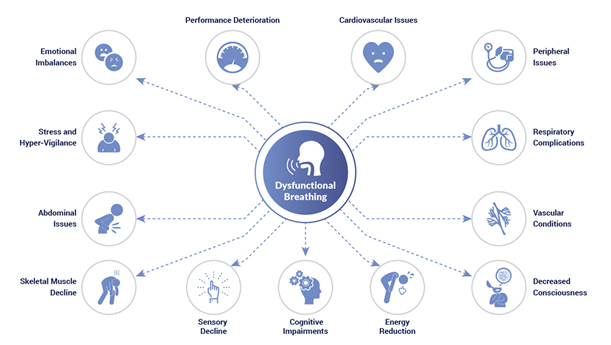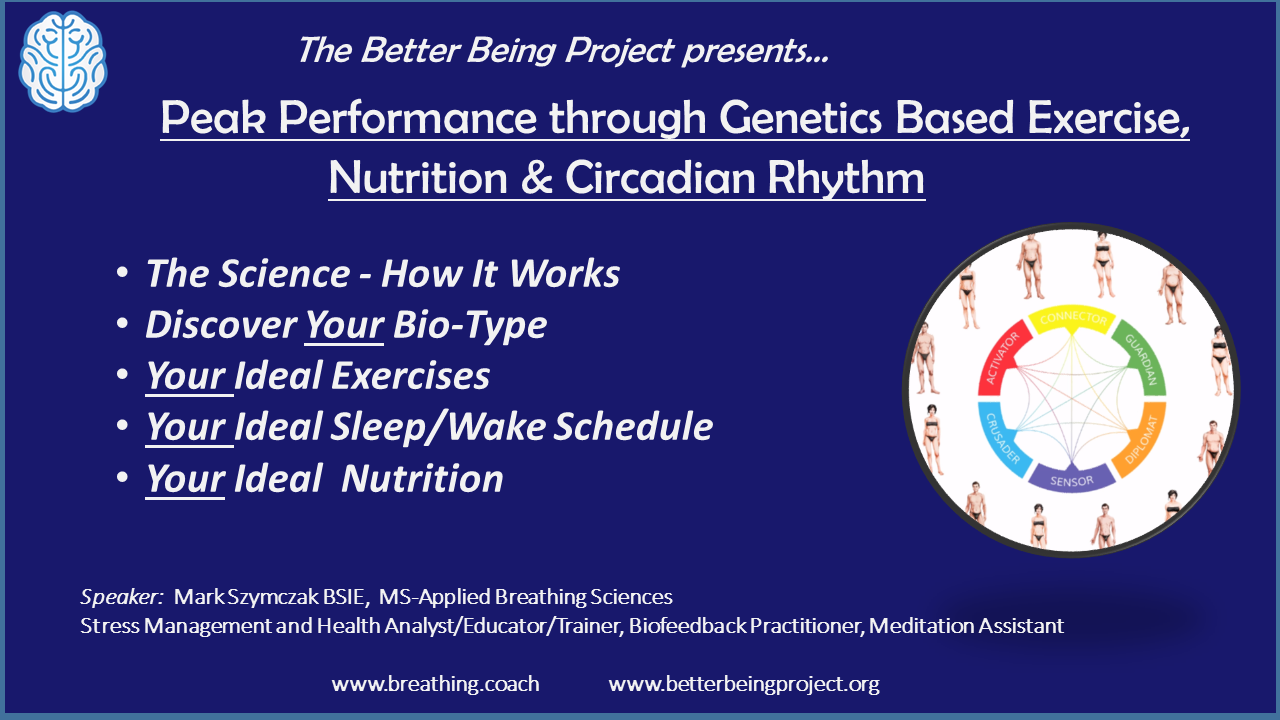If health, performance and longevity, are in your game-plan, physiology fitness must not be overlooked. Building robust physiology translates to body systems what they need in the way of energy, oxygen and “clean-up” for all systems to operate at 100% for years and years to come. These systems include the autonomic nervous system, the cardio-respiratory system, the gastrointestinal system/microbiome, the muscular/skeletal system, primo vascular system and especially our mitochondria. Mitochondria, like the microbiome are symbiotic organisms within the human body whose health we must take care of if we expect them to take care of us.

Physiology Fitness

One aspect of healthy physiology entirely overlooked which plays a dramatic role inhealth versus disease is respiratory fitness and breathing. Breathing is a habit and like nutritional habits, we can take in healthy food/air, junk food/air or too much food/air. The video below offers a brief window into how breathing habits go awry and subsequently degrades health, performance and productivity.


While dysfunctional breathing causes, contributes to or exacerbates many health related conditions, even those with decent physiology can benefit from better breathing, improved respiratory fitness and more balanced internal chemistry. Because this is a paradigm shift how one views breathing, education is in order before change can occur. The BBP presentation on Better Breathing for Better Living helps individuals discover:
- myths and incorrect beliefs around breathing
- consequences of dysfunctional breathing
- the lasting benefits of building respiratory fitness
- how to determine your breathing health and respiratory fitness
- The “what”, “how”, “where”, and “when” of improving respiratory fitness

We certainly cannot overlook exercise and nutrition’s role in physiology, health and performance. They play vital roles in the overall well-being and longevity equation. Because everyone is unique and there are vast choices that could lead one in the right or wrong direction, the BBP draws upon genetics based software to provide personal recommendations for exercise and nutrition. Suggestions from this software are based on algorithms that take into account a myriad of sciences and current health status inputs (embryology, anthropometry, genetics, endocrinology, Ayurveda, neuroscience, family health history, current health conditions and more). This software is uncanny in its ability to help discern the following:
- what foods are best/worst for you (+5 stars to -5 stars)
- nutritional timing – what time of day is best for you to start/stop eating
- what exercises and athletic sports are best for you
- what time of day is it best for you to be active
- your strengths and personality traits
- when and where you should vacation

A third component of optimal physiology attends to symbiotic organisms in our body– the microbiome, microbiota and mitochondria. They outnumber human cells by 10 to 1 and play key roles in helping us take advantage of the foods we eat and light we absorb to create usable energy for day to day living. Keeping these guys happy and functioning well is often overlooked but remains critical to getting well and staying well. An overview and recommendations for keeping them happy is addressed in both the presentations on Healthy Gut – Healthy You and Taming Inflammation – Naturally. The first presentation zeros in on implications of an unbalanced microbiome, how to tell and what to do about it to keep inflammation in check. The second zeros in on lesser known habits we can undertake to charge up our cellular batteries — the mitochondria. These bio-hacks will keep our both immune system and energy levels at optimal levels.
They are both critical to improving one’s physiological robustness – the anti-fragile condition needed to avoid inflammatory conditions that have become the norm over the past 50 years.


